Women's History Month 2024 Teaching Resources
Bring Women's History Month 2024 to life in the classroom with hundreds of printables, worksheets, activities and more ways to bring the accomplishments of women into your classroom this March.
This collection of Women's History Month teaching resources was created by the teacher team at Teach Starter, with printable and digital options that have been designed to meet Common Core and state standards. The majority include editable options so you can easily differentiate them for your students, and each one has been reviewed by a member of our teaching team to ensure they're classroom-ready — so you can save time on your lesson planning.
Are you teaching about women's history for the first time this March, or simply looking for fresh ideas to bring this topic to life in the classroom? Explore this primer from our teacher team with a look at the history of Women's History Month, the 2024 theme and more.
What Is Women's History Month?
First thing's first: What is the month all about?
The name may sound pretty obvious, but there are some important things to note for the kids in your classroom. Women's History Month is a time when we celebrate the achievements and contributions of women throughout history. It's usually observed in the month of March, and it's a time to reflect on the ways that women have shaped and continue to shape our world.
Let's be clear: Women's History Month is no Hallmark holiday. It's been officially recognized by the federal government since 1987 when Congress passed a law designating the month of March as a month devoted to women's history.

Before that there was a Women's History Week, also celebrated in March. It started in Santa Rosa, California in 1978 when the Education Task Force of the Sonoma County (California) Commission on the Status of Women designated the week of March 8 as its Women's History Week to run in concert with International Women's Day.
Two years later then-President Jimmy Carter gave Women's History Week federal recognition thanks to lobbying by the National Women’s History Project (now the National Women's History Alliance).
During this month, your students may encounter events and exhibits organized to highlight the accomplishments of women, as well as educational programs and workshops to teach people about the history of women's rights and gender equality. It's also a time to celebrate the women in our own lives and to appreciate the ways that they have impacted us.
When Is Women's History Month 2024?
This tribute to women in history is traditionally celebrated during the month of March — from March 1-31.
The month-long celebration includes International Women's Day — which is traditionally marked on March 8 — and includes the birthdays of some pretty significant women in US history, including:
- Abolitionist Harriet Tubman — exact birthdate unknown
- National Youth Poet Laureate Amanda Gorman — March 7
- Race Car Driver Janet Guthrie (the first woman to compete in both the Indianapolis 500 and Daytona 500) — March 7
- Supreme Court Justice Ruth Bader Ginsburg – March 15
- Soccer Player Mia Hamm (the first woman to be inducted into the World Football Hall of Fame) — March 17
- Ms. Magazine Co-founder Gloria Steinem — March 25
- Supreme Court Justice Sandra Day O'Connor — March 26
The International Day of the Girl Child, on the other hand, is not celebrated until October 11 — the birthday of former First Lady Eleanor Roosevelt.

What Is the Theme of Women's History Month 2024?
The 2024 for Women's History Month will be Women Who Advocate for Equity, Diversity and Inclusion.
Chosen by the National Women's History Alliance, the 2024 theme was picked to "recognize the example of women who are committed to embracing everyone and excluding no one in our common quest for freedom and opportunity."
What Do You Teach in Women's History Month?
As a teacher, you can use the month of March and it's female-focused celebration as an opportunity to teach about the struggles that women have faced and continue to face in terms of achieving equality and breaking down barriers. It's a time to remember that the fight for women's rights is ongoing and that there is still work to be done.
Some topics you may want to bring into your lesson planning include:
- Women's suffrage and the fight for the right to vote
- Women's rights and feminist movements throughout history
- Women in STEM and other traditionally male-dominated fields
- Women in politics and government
- Women in the arts and literature
- Women who have made significant contributions to social justice and civil rights
- Women who have shattered the glass ceiling and broken through barriers in their careers.
It's also important to note that Women's History Month is not just about the past but also about recognizing the contributions of women today and the work that still needs to be done to achieve gender equality.
Why Should Kids Learn Women's History?
Not sure if this is worth adding to your lesson plans?
Learning about women's history is important for a host of reasons.
It helps to promote gender equality in your classroom and society as a whole by highlighting the contributions and accomplishments of women throughout history. This can help to challenge traditional gender stereotypes and encourage the female students in your classroom to believe in their own abilities and potential while reminding male students that girls are their equals in every way.
What's more, studying women's history can also give the kids in your classroom a more complete and accurate understanding of the past. Many traditional historical narratives have been focused on the actions and perspectives of men, which can lead to a distorted view of history. By learning about the experiences and perspectives of women, children gain a more nuanced and complete understanding of the past.
And that's not where it ends. Take a look at some of the other benefits of teaching women's history to your students:
- Learning about women's history teaches kids the importance of social justice, as they can understand and learn the struggles of women in the past and apply that knowledge to the present and future. This can help them to be more empathetic and compassionate individuals, and to work towards creating a more equal and just society — an important part of social and emotional learning.
- Women have made a lot of contributions to society but they have often been overlooked. Studying women's history allows children to know about these contributions and make them aware of the role women have played in shaping society and the world we live in today.
- Free Plan
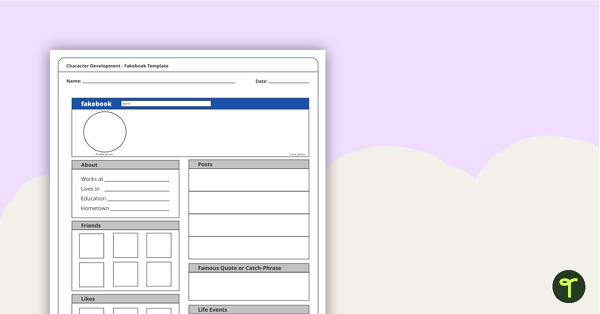
Character Development – Fakebook Page Worksheet
Use research and creative writing skills to design a social media profile for fiction or nonfiction persons.
- Plus Plan
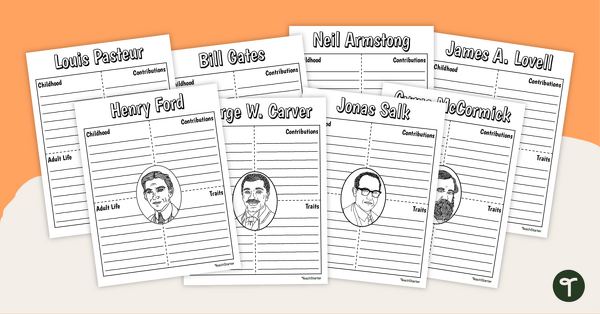
Famous Historical Figures - Biography Graphic Organizer Packs
Dive into a research project on key figures in history with a set of Important Historical Figure graphic organizers.
- Plus Plan
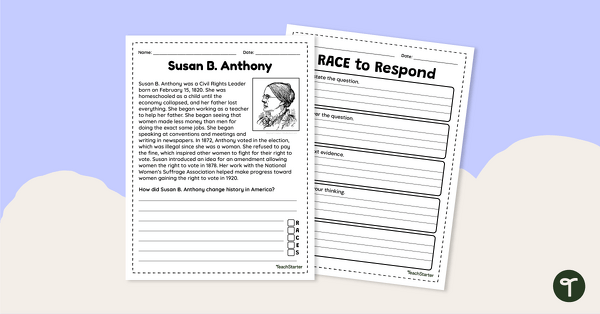
Susan B. Anthony Constructed Response Worksheet
Integrate reading, writing, and American history with a constructed response worksheet about Susan B. Anthony and the women’s rights movement.
- Free Plan
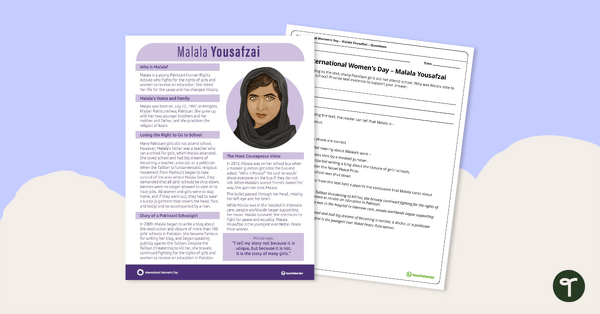
Inspirational Woman Profile: Malala Yousafzai – Comprehension Worksheet
A comprehension task to use when learning about Malala Yousafzai.
- Plus Plan
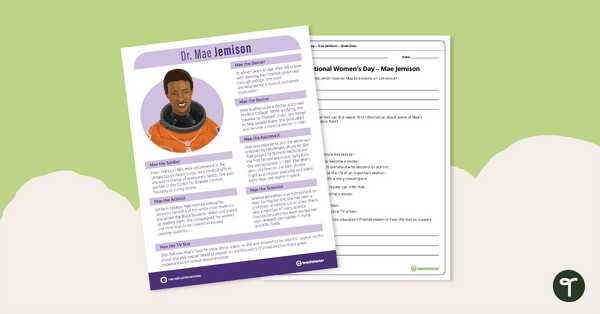
Inspirational Woman Profile: Dr. Mae Jemison – Comprehension Worksheet
Review our profile on the first Black woman astronaut and answer questions to reinforce understanding.
- Free Plan
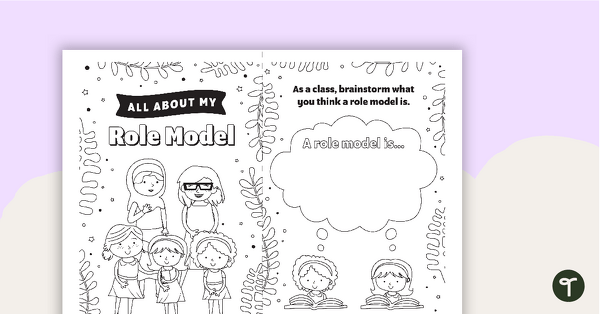
All About My Role Model Activity Booklet
A fun activity booklet for students to complete when learning about role models.
- Free Plan
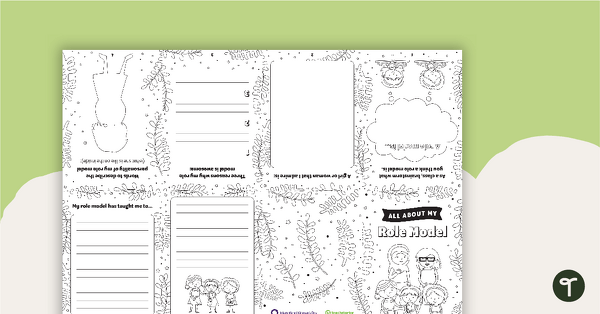
All About My Role Model Mini-Book
A fun mini-book of activities for students to complete when learning about female role models.
- Free Plan
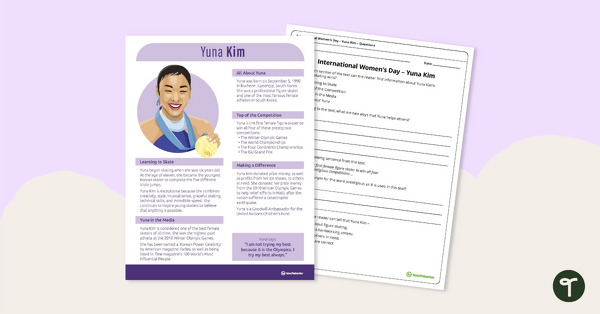
Inspirational Woman Profile: Yuna Kim – Comprehension Worksheet
A comprehension task to use when learning about Yuna Kim.
- Plus Plan
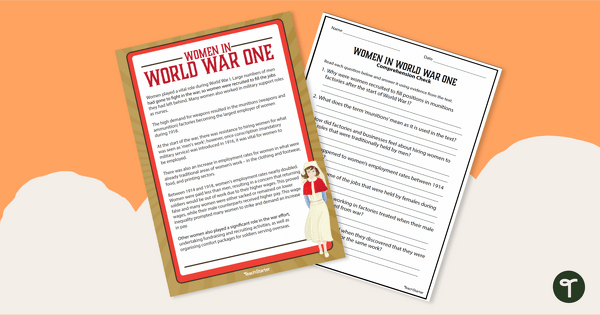
Women In WWI – Reading Comprehension Worksheet
Read to learn about women in World War I with a printable reading passage and comprehension worksheet.
- Plus Plan
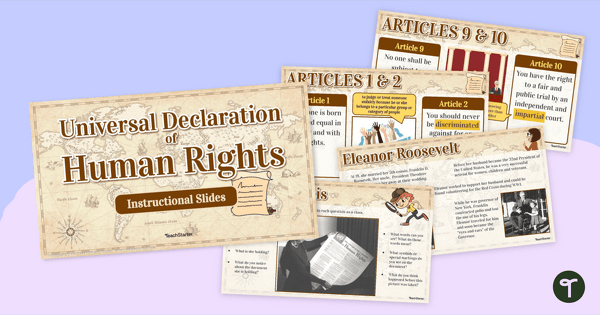
Eleanor Roosevelt - Universal Declaration of Human Rights Teaching Slide Deck
Learn about the role of Eleanor Roosevelt as the first lady and her contribution to the Universal Declaration of Human Rights.
- Free Plan
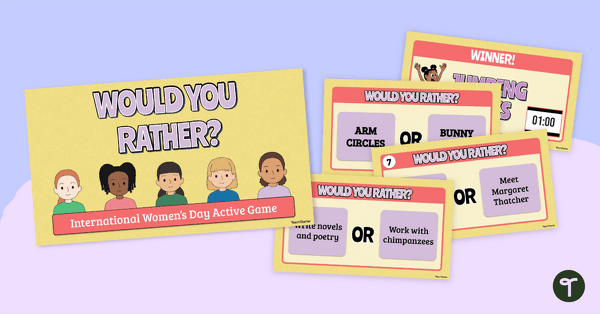
Would You Rather? International Women's Day Active Game
Engage your students in thought-provoking discussions with this set of International Women’s Day-themed "Would You Rather" questions.
- Plus Plan
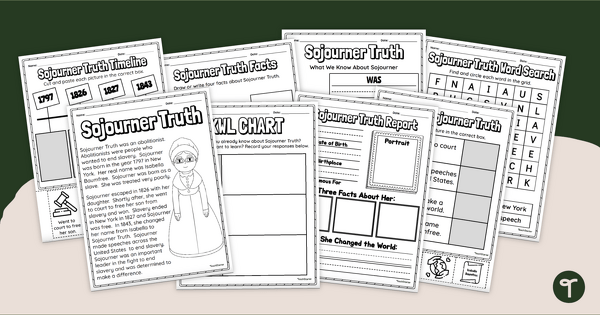
Sojourner Truth Worksheet Pack
Learn about the life and contributions of Sojourner Truth with a comprehensive pack of Women’s History Month worksheets.
- Plus Plan
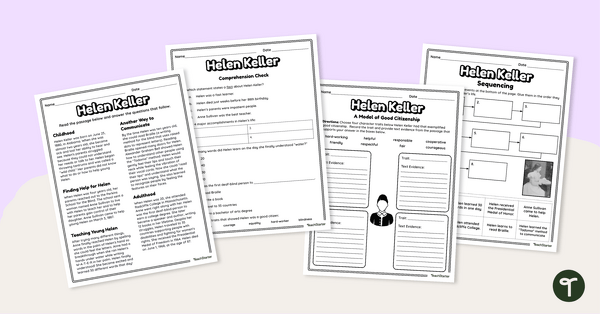
Helen Keller Comprehension Passage - Tasks
Uncover facts about Helen Keller with a reading passage and worksheet pack to practice comprehension, character analysis, and sequencing.
- Plus Plan
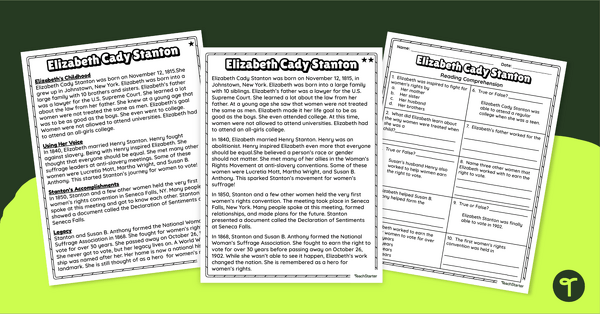
Elizabeth Cady Stanton - Differentiated Comprehension Worksheets
Learn fun facts about Elizabeth Cady Stanton with a differentiated comprehension passage and assessment.
- Plus Plan
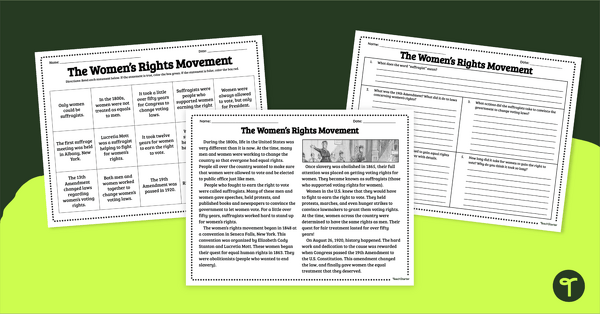
The Women's Rights Movement Worksheets - Comprehension
Read, write, and discover facts about the women’s rights movement with a reading passage and comprehension worksheet pack.
- Plus Plan
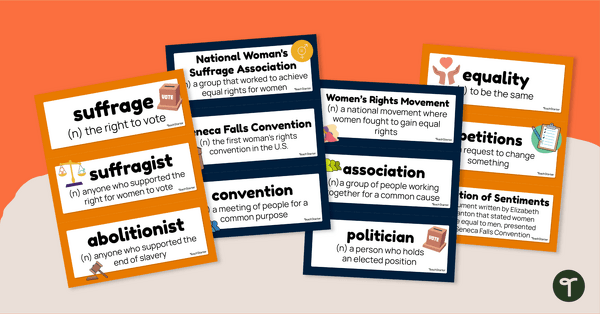
Women's Suffrage Vocabulary Word Wall
Build academic vocabulary surrounding the Women’s Rights Movement with an illustrated vocabulary word wall.
- Plus Plan
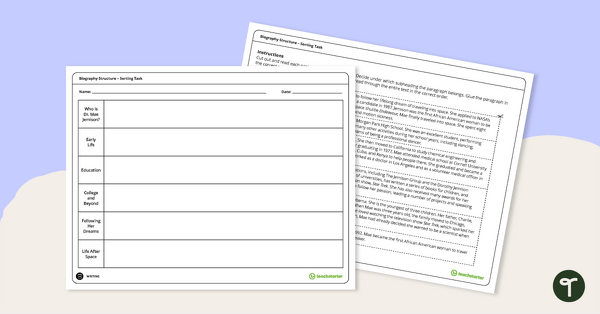
Dr. Mae Jemison – Biography Structure Sorting Task
Read and sort to help students learn about the structure of a biography with our cut and paste biography worksheet.
- Plus Plan
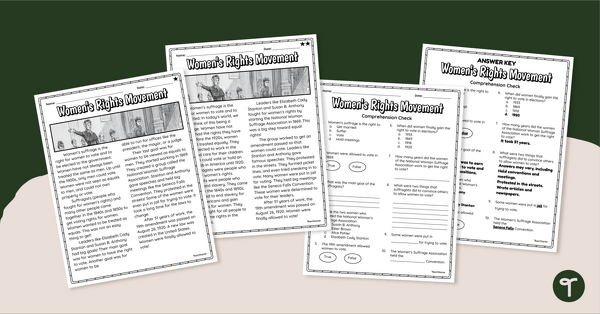
Women's Suffrage - Differentiated Comprehension Worksheets
Integrate reading, writing, and American history with a differentiated comprehension passage and worksheet about Women’s Suffrage.
- Plus Plan
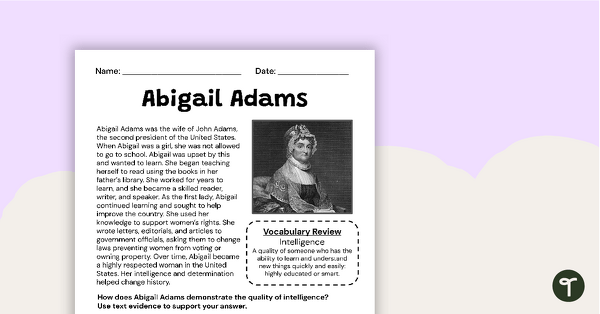
Abigail Adams Constructed Response Worksheet
Use this passage, writing prompt, and worksheet to help students write a constructed response paragraph about Abigail Adams.
- Plus Plan
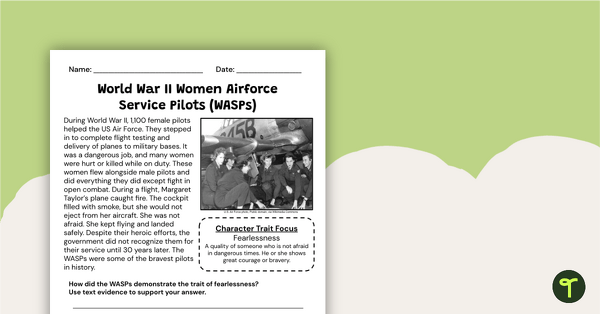
Women Airforce Service Pilots (WASPs) Constructed Response Worksheet
Use our printable constructed response writing prompts for fourth grade to learn about the fearless Women’s Air Force Service Pilots (WASPs).
- Plus Plan
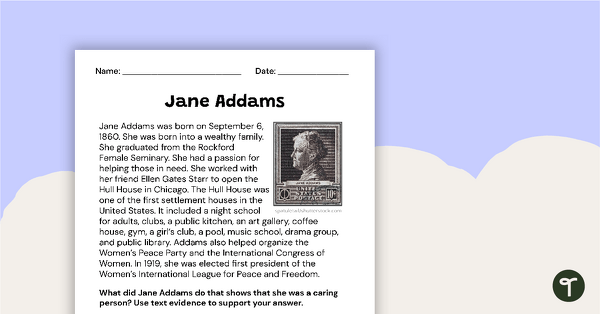
Jane Addams Biography - Worksheet
Use this biographical constructed response worksheet to teach your students about Jane Addams.
- Plus Plan
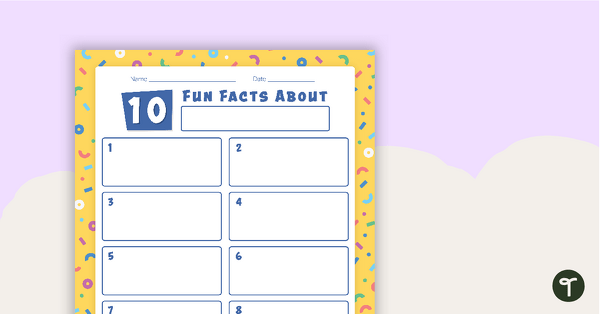
10 Fun Facts Writing Template
Use this template to distinguish between fact and opinion when studying informational or biographical texts.
- Plus Plan
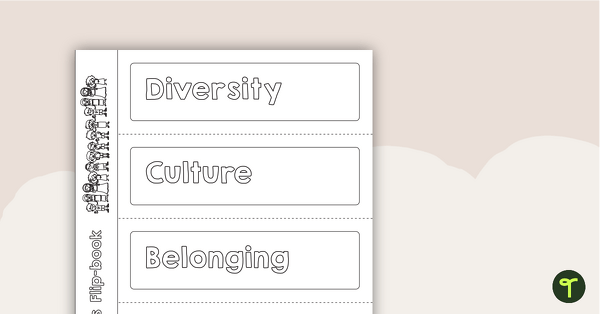
'Everyone Belongs' Vocabulary Flip-book
Define and discuss vocabulary words associated with diversity and equality using this flip-book writing activity.
- Free Plan
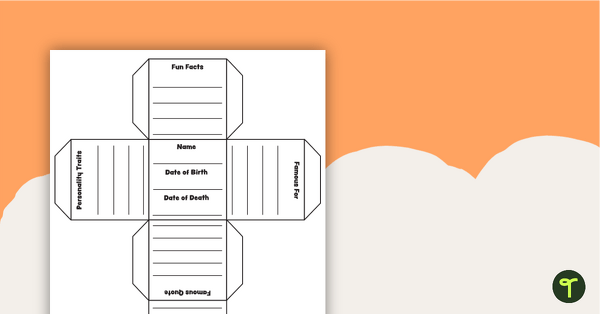
Biography Cube
Research and create an interactive biography for a historical figure.
- Women's History Month 2024 Worksheets
- Women's History Month 2024 Templates
- Women's History Month 2024 Instructional Slide Decks
- Women's History Month 2024 Posters
- Women's History Month 2024 Mini Book
- Women's History Month 2024 Cut and Paste Worksheets
- Women's History Month 2024 Graphic Organizers
- Women's History Month 2024 Writing Templates
- Women's History Month 2024 Flipbooks
- Women's History Month 2024 Games
- Women's History Month 2024 Projects
- Women's History Month 2024 Brochure Templates
- Women's History Month 2024 Interactive Activities
- Women's History Month 2024 Puzzles
- Women's History Month 2024 Word Searches
- Women's History Month 2024 Word Walls
- Women's History Month 2024 Bookmarks
- Women's History Month 2024 Craft Activities
- Women's History Month 2024 Active Games
- Women's History Month 2024 Matchup Games
- Women's History Month 2024 for Pre-K
- Women's History Month 2024 for Kindergarten
- Women's History Month 2024 for 1st Grade
- Women's History Month 2024 for 2nd Grade
- Women's History Month 2024 for 3rd Grade
- Women's History Month 2024 for 4th Grade
- Women's History Month 2024 for 5th Grade
- Women's History Month 2024 for 6th Grade
- Women's History Month 2024 for 7th Grade